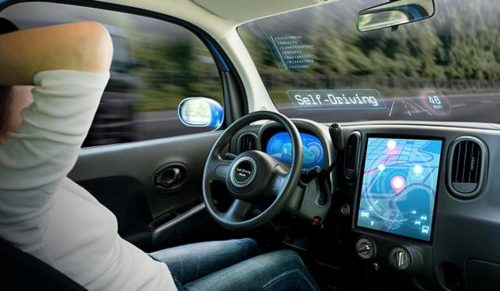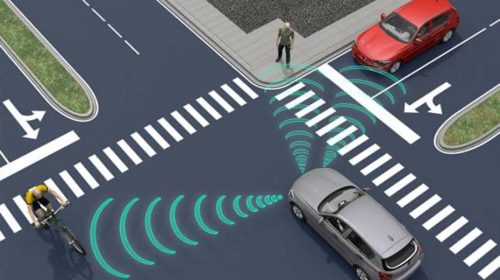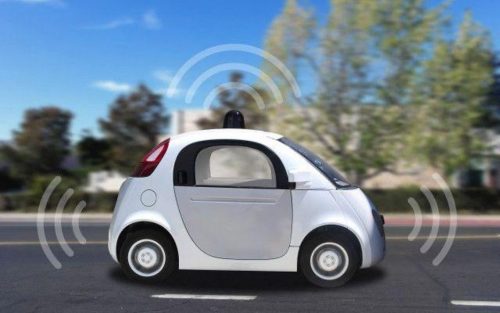There are things to defeat before automotive cars and trucks share the roads, and roads with
human-driven vehicles remain. To pioneer this research, we should initially convey a team of
attorneys. We should initially know who is legally liable for a vehicle’s far-off operation in
our universe of things to come. Property and casualty attorneys can make a living by suing
inept and flippant drivers, causing mayhem on the roadways. I can conjecture that the
lawsuits will increase over software glitches causing an accident or somebody hacking and
stealing somebody’s autonomous vehicle.

11 Smarter Move-in Automotive Industry with AI
1. Communicating And Networking
The main reason motorists engage in accidents, heavy traffic conditions, and similar roadthe issue is the lack of opportune information. For example, another driver may go through a red light. That regularly brings about a crash because other drivers are unprepared. Roadblockage happens because many motorists take the same roads. If they had access toinformation that warned them of traffic, many would take alternate courses.
A great deal of automobiles is already equipped with gadgets that communicate with other vehicles. For example, lane change warning systems use sensors to identify the presence of other cars. If you attempt to move into a lane involved by another, the system will either warmyou, apply braking power, or impact directing control.
Industry experts like Finalscope recommended this type of innovation is being utilized (on an experimental platform) to allow cars to communicate and network with structures, traffic lights, and other infrastructure. Data is shared among them to assist motorists with avoiding crashes and clogs.
2. The Automotive Safety Net
Adaptive journey control systems already apply braking power given a driver’s nearness to objects in their path. A couple of automakers are utilizing that same innovation to add a degree of safety.
Sensors and radar innovation are installed inside automobiles. These gadgets scan the landscape and note the places of other vehicles. If necessary, the PC will apply the brakes to forestall a crash. If a crash is unavoidable, the PC will adjust the seats to limit the motorist’s impact.
3. A Little Help Steering
The innovation utilized in lane change warning systems is being expanded to give seriously controlling control to automobiles. For example, if you drift into another lane without engaging your turn indicator, your car’s PC can apply the brakes on one side. That will gradually move your vehicle back into your lane. Soon such innovation enables your car to make turns and parallel park all alone.
While a completely automated pushing experience is still decades away, automakers are planning hearty systems that lessen the degree of information needed from us. In our lifetime, we are probably going to observe a significant development in automotive intelligence.
4. Wi-Fi on the track
After years of analysis of the wireless help on its trains, Amtrak has upgraded its cellular-based Wi-Fi utilizing broadband advances to improve the Internet’s speed and reliability on its passenger cars. Amtrak keeps on giving free Wi-Fi administration, regularly supporting 30-half of passengers on a given train.
Nonetheless, they will keep on restricting some Internet activities and confine data-heavy activities that could back the assistance off (e.g., streaming video and music destinations) and limit record downloads larger than 10 MB.
While passengers will keep on having a superior Internet experience aboard its trains, high- velocity administration isn’t available all over the place. Because the railroad utilizes different carriers along with its courses (e.g., Verizon and AT&T), the administration could, in any case, be interrupted or eased back as the Wi-Fi signals switch between carriers
5. MiFi on the Road
MiFi stands for “My Wi-Fi”… a wireless router that acts as a portable Wi-Fi area of interest. A MiFi gadget can be associated with a cell phone and give Internet access to up to 10 gadgets, working at a distance of up to 30 feet. MiFi gives Internet access to any WiFi- enabled peripheral gadget. Most new laptops and scratch pads equipped with worked in wireless broadband gadgets work similarly.
As cars become increasingly associated, the probability of self-driving cars is inside our grasp. Does this appear to be far gotten to you? Indeed, it’s not really when you think abouttoday’s leading advances in sensors, displays, in-vehicle operating systems, wireless data communication, artificial intelligence (machine learning), and discourse acknowledgment. The advantages would incorporate diminished accident rates, improved traffic stream, brought down outflows, and a cool, new driving experience!
6. Car Telemetric
In the past five years, we’ve seen a tremendous development of in-car telemetric. We’ve also seen phenomenal development in the utilization of smartphones. Global-Positioning Satellite (GPS) tracking has gotten standard in our lives now. The logical subsequent stage is the advancement of autonomous vehicles with their own onboard PC adequately sophisticated to drive a car safely. Then how long will it take for major corporations to “create” super PCs that can screen and control a large number of vehicles on the road every day – vehicles without a driver in the driver’s seat that can make rational choices? Will they be sharing the road with human-controlled drivers, or will they have their own private highways?
7. AI in Trains
Does traveling from NYC to LA in under an hour peak your advantage? How might you like something that is self-powering, invulnerable to weather, and can never crash? Elon Musk, the prime supporter of PayPal, has an amazing vision-Hyperloop. Musk portrays it as a “cross between a Concorde, a rail weapon, and an air hockey table.”
Theoretically, Hyperloop tube travel would utilize magnets to take passengers aboard an underground train starting with one destination then onto the next at staggering rates. The encased cylinder would allow the capsule to travel without air resistance and next to no erosion. The reality of the situation will become obvious eventually, whether innovation advancements will allow us to see this in our lifetime.
8. AI in Plane
If you’re flying overseas, Wi-Fi turns out to be significantly harder to get because of the requirement for satellite-enabled technology. Just 279 departures from the U.S. have full- flight availability; notwithstanding, more airlines are adding the support of their international Armadas.
Southwest and US Airways come in second and third, separately. For example, a few airlines also, give motion pictures and live TV on a portion of their flights. Additionally, many airports gate areas are being updated to incorporate power stations where travelers can recharge their gadgets preceding their flights so they can sit back, relax and stay associated with the world beneath.
9. AutoPilot and AI
As we’ve seen, the US Air Force is increasing robot aircraft utilization to carry out bombarding missions and intelligence gathering in unfriendly zones. A robot pilot can manage a plane on missions in Iraq, Afghanistan, or other difficult areas from a control room at a base in the western United States.
We can assume that having PC-driven vehicles will allow more productive and safer driving. This assumes that a PC will be pleasant to other vehicles and make safe choices. There is a myriad of things that should be resolved before PCs take to the roads. How do you offer insurance coverage for a vehicle without a driver? How does a cop “pull more than” a PC? Who has more rights, a human driver or a PC driver?
Some way or another, consistently, a driver faces tremendous chances with the roads loaded up with human drivers who can and will make random choices. There are more than 33,000 deaths annually from traffic accidents and more than 1.2 million wounds. One can assume that the goal of autonomous vehicles is to bring down traffic deaths. Clearly, some human drivers make bad decisions – like driving excessively fast, making improper lane changes, braking inadequately, or being inattentive. Exactly how do we make this transition to a checked, controlled driving climate with the “trump card” being a free-thinking human?
10. Safety Technology in Driverless Cars

Insightful safety advancements, for example, braking assist, vulnerable side checking, and lane departure warning systems are generally available in today’s new vehicles. The various safety advances consolidate various sensors and screens utilizing LIDAR, radar, GPS, camera, and other mediums. These mediums transmit a signal to the vehicle to warn the driver if intercession is required or start to execute a capacity autonomously, such as braking
Today features like vehicle-to-everything innovation (V2X), which joins vehicle-to-vehicle (V2V) and vehicle-to-infrastructure (V2I) innovation, are used in many safety and comfort features. In fact, the U.S. Department of Transportation has estimated that V2X innovation could forestall 80% of accidents.
Although these systems are not totally autonomous, the actual innovation works as a catalyst in driverless car’s advancements. Vehicle-to-infrastructure safety innovation accounts for features, for example, red light violation warning, spot weather, bend speed warning, work zone safety, connect tallness, pedestrian in intersection signal, and stop sign gap assist. Meanwhile, vehicle-to-vehicle innovation works in harmony, offering features, for example, crisis brake light warning, forward impact warning, red light violation, moderate traffic ahead, aggressive driver warning, crisis vehicle notification, and road hazard location.
11. Scheduled Drive
Imagine this scenario: you move into your car to start your regularly scheduled drive to the office. You fasten your seat belt, start your vehicle, and start driving. You take out your newspaper and start reading, sure that your car will reach your destination without requiring any manual contribution from you.
What I’ve recently portrayed may appear to be laughably near sci-fi. In reality, the automotive innovation expected to accomplish a large portion of the above is already being developed. Automakers are integrating artificial intelligence inside their individual armadas that allow their vehicles to avoid traffic crashes, including those that include pedestrians.
Can Driverless Cars Save Lives?
Since the improvement of impact avoidance innovation, traffic occurrences have decreased. In the United States alone, accidents bringing about a fatality have almost been sliced down the middle from 60,000 out of 1970 to 32,719 of every 2013. Subsequently, researchers accept that driverless cars might actually decrease impact fatalities by 90%.

For instance, when it comes to factors like alcohol and medications, speeding, wet or frigid roads, distracted driving, or even lack of experience, self-driving cars would decrease accidents significantly. These factors account for 40% of crashes, according to the NHTSA.
The Eno Center for Transportation reports that if a simple 10% of vehicles in the United States were autonomous, 211,000 traffic accidents would be avoided, and 1100 lives would be saved.
If United States roadways comprise 90% of driverless vehicles, it might actually eliminate 4.2 million accidents and 21,700 fatalities. Subsequently, this could save the nation up to $450 billion in related expenses. With safety features advancing in today’s market thanks to autonomous innovation, there is no rejecting that driverless cars are the way of things to come.
What are the risks of Driverless Cars?
While driverless car innovation may offer many automated safety features that could save lives, automated innovation represents a danger: hacking. Andy Greenberg and a Jeep Cherokee filled in as a perfect example of this. Charlie Miller and Chris Valasek asked Greenberg to be a “digital crash-life-sized model” and distantly controlled features in the Jeep Cherokee as he drove, for example, air-molding, radio, windshield wipers, and audio-display system. They had the option to initiate control through a vulnerable spot (which has yet to be revealed) in Chrysler’s system. Although the attack was not expected to be malicious, it brought up flaws in the current automaker’s systems. The hacking team has since been working with Chrysler to cure this.
How Driverless Car Technology Will Save Lives?

When it goes to driverless car’s operations, similar yet further developed mediums than seen today will be utilized. The advanced GPS will navigate and direct the vehicle’s course. In contrast, the radar and LIDAR systems will coincide with perceiving the road’s states and the vehicle’s environmental factors. A learning algorithm then works to read the recently referenced systems to drive the vehicle by conditions.
Driverless car’s vehicles-to-vehicle, vehicle-to-infrastructure, and vehicles-to-everything radar systems will actually want to communicate with other driverless cars and trucks on the road, from distinguishing other vehicles around them to know they are choosing courses. This would allow for driverless vehicles to all the more likely anticipate and foresee braking and acceleration of the vehicle before them. This innovation would also allow for a superior drive and diminish traffic accidents. According to the Federal Highway Administration quarter of all traffic jams are an aftereffect of accidents. An investigation led by The Eno Center for Transportation found that highway blockage could be decreased by 75% with driverless car innovation.
Conclusion:
There’s not even a shadow of a doubt; driverless cars are shaking things up all through the automotive business. One of the main concentrations for pundits and purchasers is whether driverless cars are actually safe. The World Health Organization estimates that there are 1.2 million traffic fatalities worldwide each year; in any case, there has been a significant decrease in fatalities since the advancement of impact avoidance innovation.
Google has effectively tried automotive vehicles. So far, they’ve logged more than 140,000 miles in testing. Nonetheless, at least one crash was apparently caused by a human driving another vehicle that crashed into the automotive vehicle. And Nevada has become the main state to adopt legislation to allow for automotive vehicles.
Interesting Related Article:”5 Best Smart Electric Cars”

